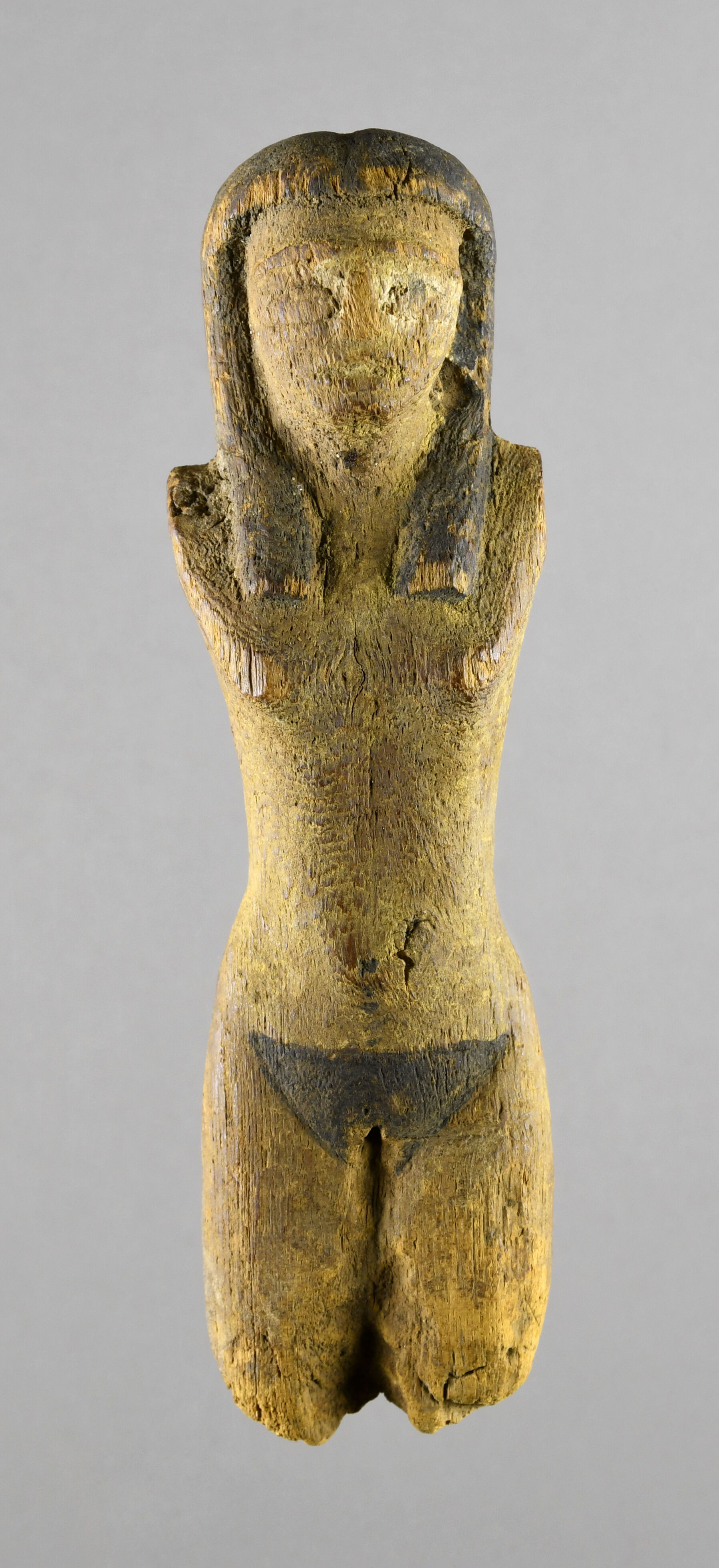The female offering figure once stood holding an offering in one hand and supporting a basket on top of her tripartite wig with the other. On the top of the figure’s head is a small hole for a dowel to attach to a basket containing food or object offerings. Unlike catalog number 76, this offering figure is naked, which is not uncommon in the depiction of offering bearers.
Over the millennia, this figure lost its arms and legs and sustained loss of pigment and the wearing away of the face. It is the loss of the legs, however, that has had the most impact on its interpretation since, at the same time as offering figures, truncated female figurines were deposited in tombs. Truncated female figures were purposefully missing the legs from the mid-thigh down. They had a different role from the offering bearers, embodying ritual dancers, in the revivification of the deceased.1 We know this figure is an offering bearer since she is wearing a lappet wig, which is not worn by truncated female figurines.
EW
-
Morris, Ellen F. 2011. “Paddle dolls and performance.” JARCE 47: 71-103.; Tooley, Angela M.J. 2017. “Notes on the Type 1 truncated figurines: the Ramesseum ladies. In Company of images: modelling the imaginary world of Middle Kingdom Egypt (2000-1500 BC).” In Proceedings of the International Conference of the EPOCHS Project held 18th-20th September 2014 at UCL, London, edited by Gianluca Miniaci, Marilina Betrò, and Stephen Quirke, 421-456. Leuven: Peeters.. ↩︎
Bibliography
- Morris 2011
- Morris, Ellen F. 2011. “Paddle dolls and performance.” JARCE 47: 71-103.
- Tooley 2017
- Tooley, Angela M.J. 2017. “Notes on the Type 1 truncated figurines: the Ramesseum ladies. In Company of images: modelling the imaginary world of Middle Kingdom Egypt (2000-1500 BC).” In Proceedings of the International Conference of the EPOCHS Project held 18th-20th September 2014 at UCL, London, edited by Gianluca Miniaci, Marilina Betrò, and Stephen Quirke, 421-456. Leuven: Peeters.
